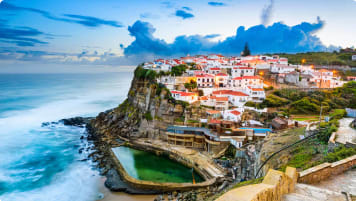The Golden Years of Lisbon
Successfully breaking the Venetian monopoly on spices and also cornering the African market made Portugal cash-rich. Pepper, which the Portuguese bought for two cruzados (gold coin) a sack in Cochin, India, was sold for 30 cruzados in Lisbon.
31 Oct 19 · 9 mins read
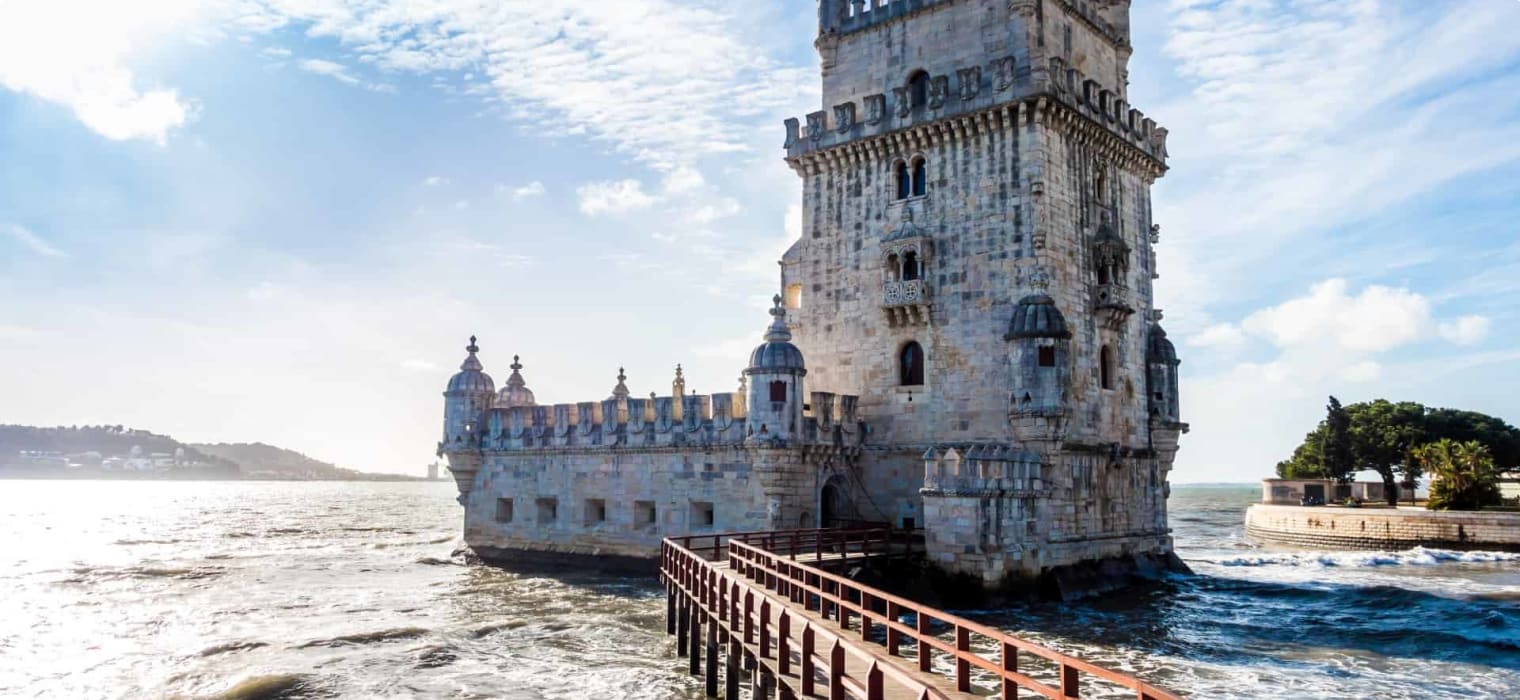
The Golden Years of Lisbon
In his Introduction to his book Queen of the Sea: A History of Lisbon (C. Hurst & Co, 2018), Barry Hatton describes the cortège or retinue of the Portuguese King Manuel I in Lisbon:
“It was led by a rhinoceros which was followed by five elephants rigged out in gold brocade, then an Arabian horse, a jaguar, and finally the sovereign and his court” (p. 1).
This “flaunting of wealth” (p. 1) encapsulates the height of power and opulence in Lisbon, Portugal during the great age of Portuguese expansion. In this article, we will look at how Lisbon became the centre of international trade, and see how its golden years ended with the ascension of the Spanish kings.
This is written as a backgrounder for our small group tours. On our immersive 18-day tour of Portugal, a multi-sensory experience takes us from the capital of Lisbon, through Portugal’s many historic sites, natural wonders and scenery, and charming towns and villages and hidden gems, before ending at the vibrant city of Porto on the coast of the Atlantic. “Discover Portugal” is especially designed for mature-aged or senior travellers and offers a rich sampling of the culture and history of this European country. We will be accompanied by a Program Leader and a local guide or tour guide based in the destinations we will visit.
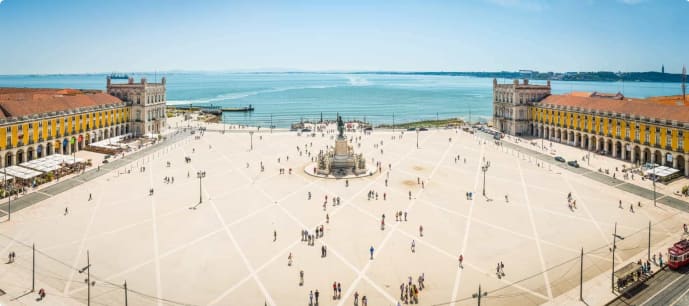
We also have a tour that includes both Spain and Portugal. The Iberian Peninsula is renowned for the spectacular views of its scenery, its red wines, and exotic food. Our Spain and Portugal tour explores the peninsula’s intricate history and incredible art and architecture as we stroll and wander through its streets. This small group walking tour and sightseeing tour spends 24 days exploring several famous destinations. The tour commences in Spain in Barcelona a highlight of which is the colourful Park Guell. From Barcelona, the tour heads north into Rioja and Basque country before reaching the northern industrial city and home to Europe’s Guggenheim museum, Bilbao in Northern Spain. We leave Bilbao heading south to spend almost 6 days in the Spanish capital, visiting the Royal Palace and other highlights. After Madrid the tour heads to Salamanca, a UNESCO World Heritage Site, and northwest into Portugal. We explore the Atlantic coast, and then on to Lisbon, the nation’s historic capital. Leaving Portugal, the tour heads south to Seville and finally concludes in Granada.
For more information about the history of Lisbon, we recommend Barry Hatton’s Queen of the Sea: A History of Lisbon and the resources we’ve linked in this article.
Lisbon’s Beginnings
Our previous article traces Lisbon’s beginnings to the Roman settlement Olisipo (full name: Municipium Cives Romanorum Felicitas Julia Olisipo) and to the 8th century Moorish district of Alfama during the reign of the Umayyad Caliphate over much of Portugal and neighbouring Spain. Christians would retake the city in 1147 as part of the Second Crusade.
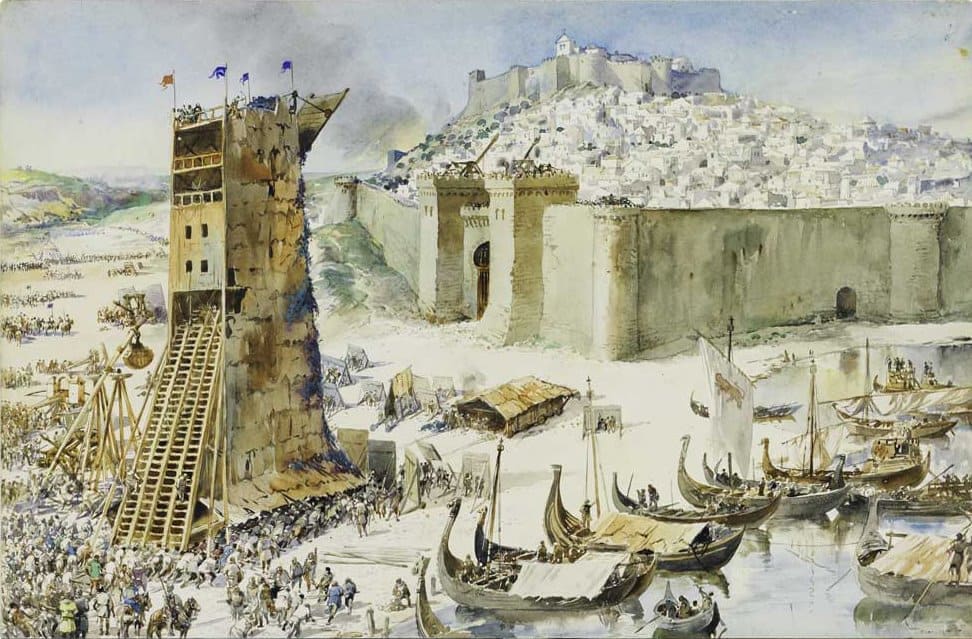
In 1179, Afonso Henriques, leader of the Reconquista (Reconquest), placed Portugal under the direct protection of the Holy See and was crowned Afonso I.
Portugal had disputes with the Kingdom of Castile (now part of Spain) over issues of territory. When John I was crowned in 1385, he was opposed by Castile, whose queen, Leonor, was married to John’s brother and predecessor. Portuguese forces defeated Castilian forces in battle, and John was assured of his rule.
“Starting gun for the Age of Exploration”
Commerce prospered during his reign, strengthened by his daughter’s marriage into the family of Philip III of Burgundy, whose county, Flanders, played an important role in international trade. In 1415, a Portuguese battle fleet conquered the Muslim stronghold and commercial port of Ceuta on the coast of Morocco, which Hatton (2018) says fired “the starting gun for the Age of Exploration” (p. 51).
John I’s third son was Prince Henry, named “Henry the Navigator” by English (rarely by the Portuguese) writers–not because he himself embarked on exploratory voyages, but because he was an avid patron of them. He was part of the fleet which attacked Ceuta and was appointed the king’s lieutenant to ensure the city’s defence. As administrator general of the Order of Christ (replacing the Templars in Portugal), the prince amassed great wealth, which he used to sponsor expeditions along Africa’s west coast in the 1420s.
Portugal’s interest in Ceuta and the western coast of Africa was the trade in ivory, gold, and slaves. As we’ve written before in “Portuguese in Africa“, West Africa had long had market economies before the Portuguese arrived, based on shell currency. The title of Toby Green’s book A Fistful of Shells: West Africa from the Rise of the Slave Trade to the Age of Revolution (Allen Lane, 2019) refers to this currency. The main currency of the Kingdom of Kongo, which dominated West Central Africa, were cowrie shells called nzimbu. Portuguese merchants reduced all money in Kongo to enslaved persons. Nzimbu covered domestic expenses “but slaves covered international financial and domestic obligations”. For two hundred years, from 1440 to 1640, Portugal had a monopoly on the slave trade.
Lisbon had a large African population, unique among European cities at this time. Revealing this tragic dimension of the Age of Exploration, most of Lisbon’s African community – which in 1551 numbered 10,000 or around 10% of the city’s population – were slaves.

Cornering the Spice Trade
The great-nephew of Henry the Navigator, John II, had his eye on another valuable trade item: spices. The spice trade–the trade of seasonings such as cinnamon, cassia, cardamom, ginger, and turmeric, and fragrant gums and resins such as frankincense and myrrh–had been driving the world economy since antiquity, with Arab traders from the “great spice emporium” of southern Arabia withholding the true sources of the spices they sold in order to protect their market. This included telling fantastic tales (e.g. “the great bird ‘cinnamologus’ made its nest from cinnamon sticks”) to keep the Greeks and Romans to stick with their Arabian middleman.

John II wanted to cut the middleman. The sources of the spices–Asia–became known during the Middle Ages, but no other European ruler could break the monopoly of Venice in its trade in the Levant. During John II’s rule, spices were still conveyed overland to the port of Alexandria in Egypt–which had been earning enormous revenue from port dues back in 80 BC–and then by sea to Venice, where spices were sold to the rest of Europe (Hatton, 2018, p. 52). This put Lisbon at the end of a long trading chain, shouldering the mark-ups and exorbitant prices of the items.
The king wanted the spices to go straight from Asia to Lisbon, and in the 15th century, fleets departed from the Tagus river in Lisbon to the Atlantic to figure out this maritime trade route.
In 1488, Bartolomeu Dias sighted and passed through the southernmost tip of Africa on his return voyage to Portugal. Initially named by Dias as Cape of Storms (“Cabo das Tormentas“) due to the perilous currents, it was re-named the “Cape of Good Hope” (“Cabo da Boa Esperança”) by John II because it proved that India and its precious spices could be reached by sea from Europe.

A few years before this, the Genoan Christopher Columbus, who had based himself in Lisbon, sought the aid of John II to make an Atlantic crossing. Columbus was denied, and he set sail instead under the sponsorship of Ferdinand II and Isabella I of Castile. In 1493, he reported back to his Spanish sponsors his discoveries of the “New World”. The Treaty of Tordesillas was drawn up the next year, dividing all newly discovered lands between Spain and Portugal, with the Pope setting up the line of demarcation. (Portugal would later have this line moved a few degrees in 1506 in order to claim Brazil.)
The Treaty also confirmed Portugal’s “right” to explore the African continent and the Indian seaway. In 1498, the Portuguese explorer Vasco da Gama and his ships travelled from Lisbon, down the African coast and around the Cape of Good Hope, through the Indian Ocean, and landed in the heart of the spice trade–the Malabar Coast in India. Da Gama had just discovered a sea route that would bring spices–and great wealth–directly to Lisbon.
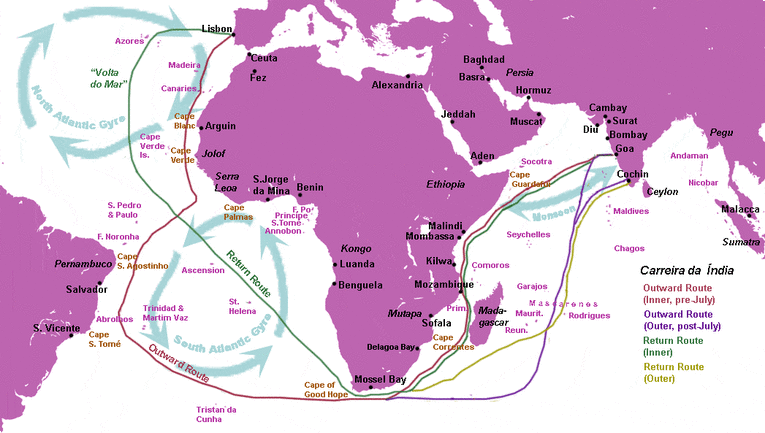
Lisbon Dominance
Successfully breaking the Venetian monopoly on spices and also cornering the African market made Portugal cash-rich (p. 53). Pepper, which the Portuguese bought for two cruzados (gold coin) a sack in Cochin, India, was sold for 30 cruzados in Lisbon (p. 53).
John II’s successor Manuel I kept Portuguese sea technology and knowledge a tightly guarded state secret. He prohibited the drawing of maps (p. 52). The sale of fast caravels (Portuguese ships) abroad could only happen with royal permission (p. 52), and ship captains and other personnel were prohibited from working with foreign countries (p. 53). The kingdom became so rich that Manuel I could afford to pay pension to 5,000 palace nobles.
Lisbon’s new dominance in international trade attracted people from all over the globe, making its population swell from 70,000 in 1528 to 120,000 by the end of the century (p. 53).
Manueline Monuments
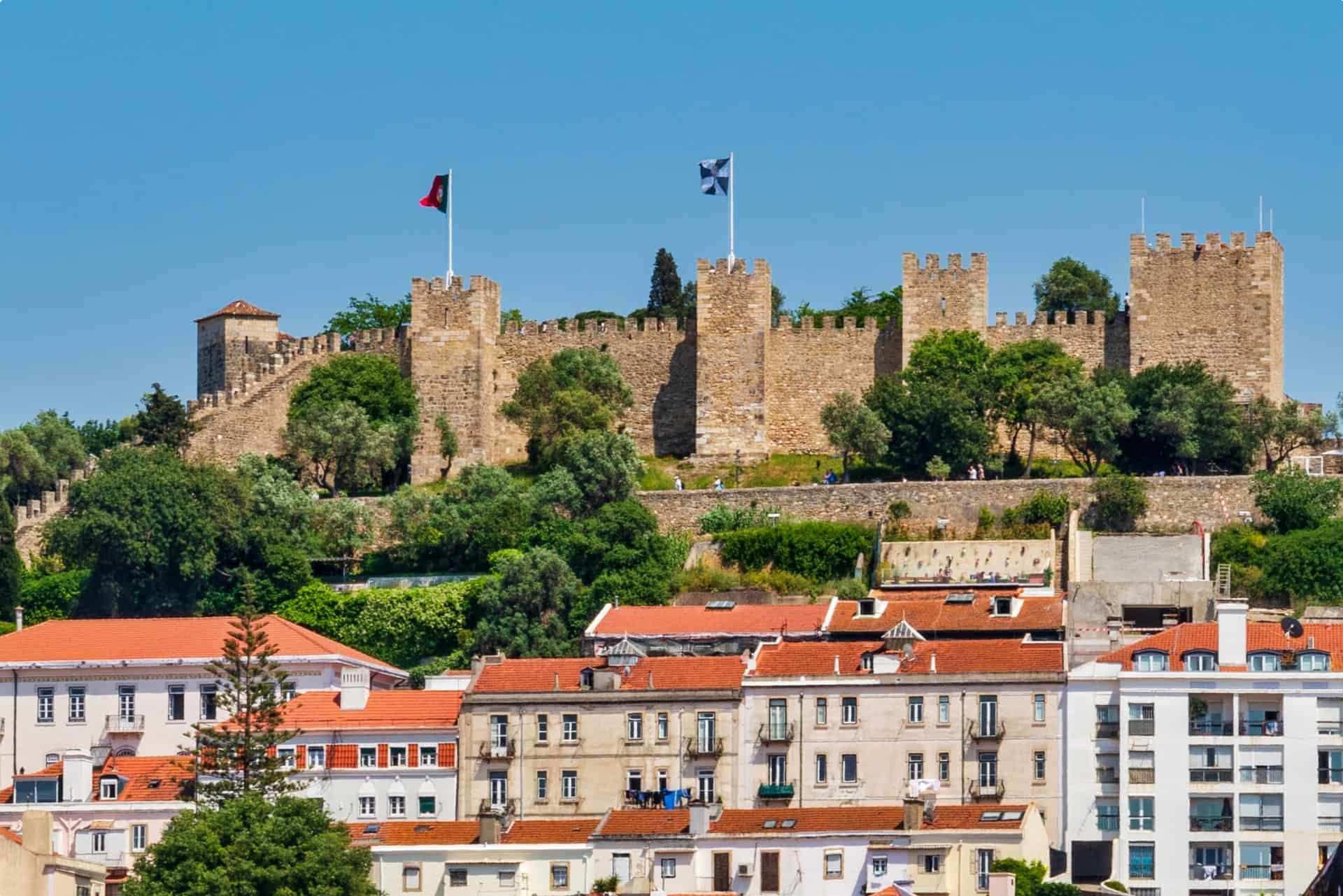
Vasco da Gama was the last guest of honour at São Jorge (St. George) Castle in 1499. By 1500, Manuel I had moved to a bigger, more magnificent castle that mirrored Lisbon’s staggering new wealth.
It also mirrored Lisbon’s new centre, as the location of the royal palace moved from the hilltop (São Jorge) to the river. São Jorge Castle was originally a small fortress that was enlarged by the Moor rulers in the mid-eleventh century. The new palace, Paco da Ribeira (Riverside Palace), signalled that “[t]he Portuguese monarch went from being a crusading warrior king…to a trade king” (Hatton, 2018, p. 55). The new palace was surrounded by the royal mint, shipyard, and armoury, collectively what Hatton called Portugal’s own military-industrial complex. Manuel I also had a stone quay built, the Cais de Pedra, where he could watch goods being loaded and unloaded from the ships. (The palace complex was destroyed in the 1755 Lisbon earthquake and was not rebuilt. Read more about the earthquake here.)
Paco da Ribeira was built in the Manueline style, named after the Portuguese monarch. The architectural style, seen only in Portugal in the 16th century, is characterised by rich and lavish ornamentation and nautical themes, such as moldings encrusted with carved barnacles and nautical instruments over windows and doors. The style flourished only for a few decades, bridging the Gothic style and the Renaissance and Mannerist styles that became popular in Portugal.
Other monuments built during this period were the Convent of Christ in Tomar, Monastery of Batalha, Torre de Belem, and Jeronimos Monastery, all inscribed on the list of UNESCO World Heritage Sites in 1983 and considered representative examples of the grand Manueline style.
The Convent of Christ in Tomar was originally the Convent of the Knights Templar of Tomar, and transferred to the Knights of the Order of Christ in 1344. It was designed as a monument symbolising the Reconquest. The Monastery of the Dominicans of Batalha, on the other hand, was built to commemorate the victory of the Portuguese over the Castilians at the battle of Aljubarrota in 1385. These two religious monuments were built in a span of centuries, later incorporating the Manueline style that came to fashion.
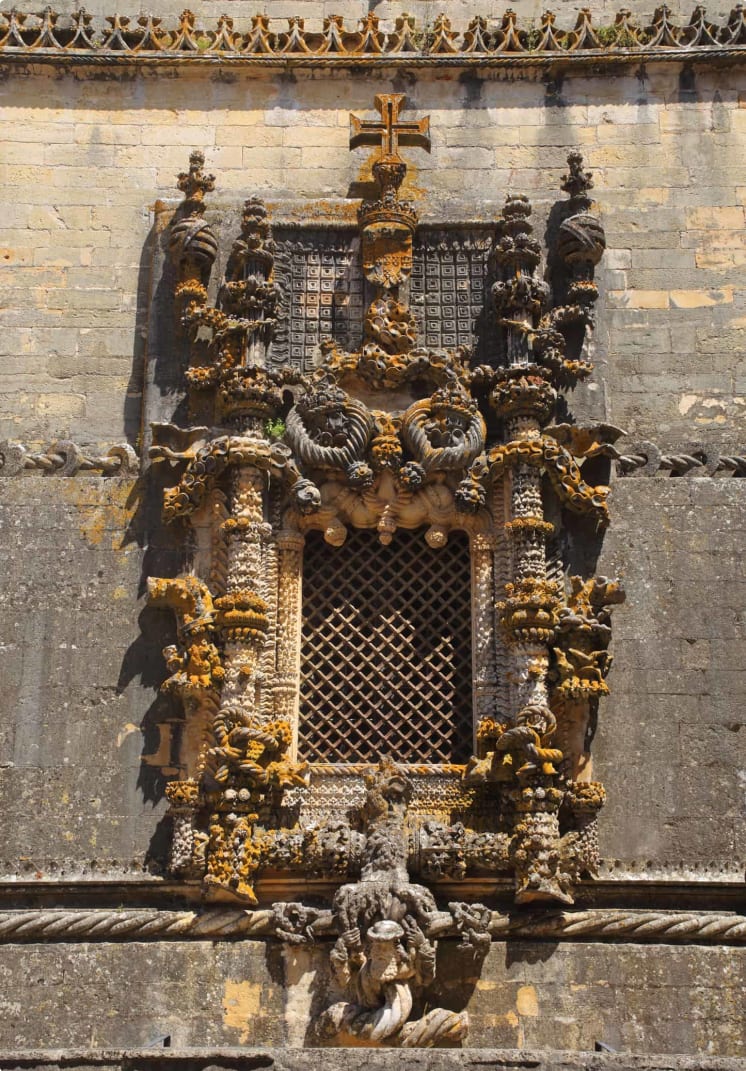

Construction of the Jeronimos Monastery began following Manuel I’s request to the Holy See in 1495 to build a monastery in the village of Belem, and took 100 years to complete. It was said to have been “built by pepper” (p. 61) as construction was funded by a 5 percent tax on spices. Standing at the entrance to Lisbon harbour, the Jeronimos Monastery replaced the Batalha monastery as the final resting place of Portuguese royals.
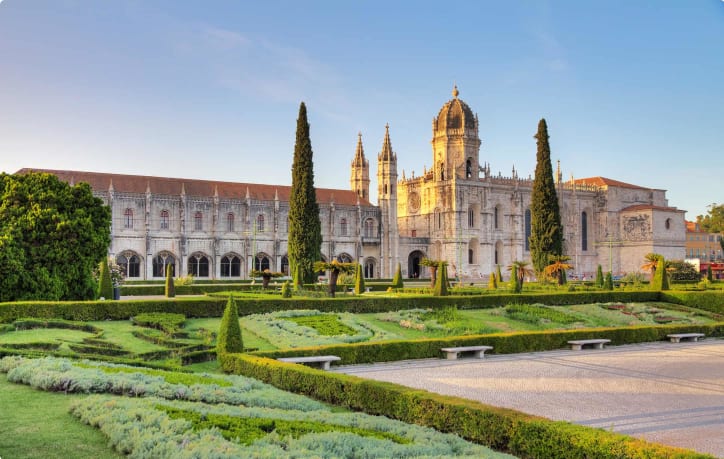
Nearby stands the Torre de Belem, built around 1514 on the banks of the Tagus River to defend the port of Lisbon.
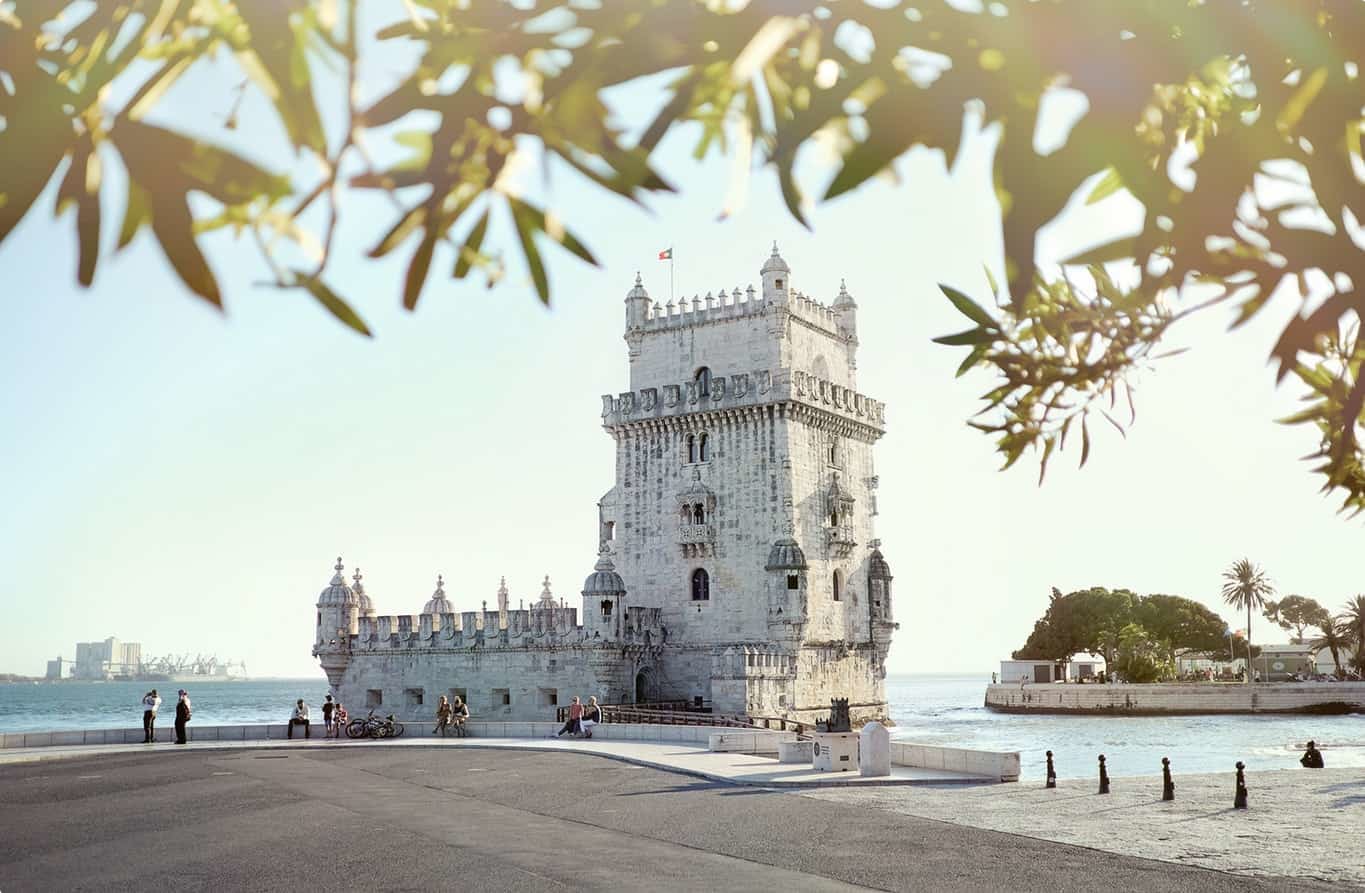
Crisis of Succession and Union with Spain
Portuguese expansion continued. They conquered Goa (1510), Malacca (1511), and captured Hormuz in the Persian Gulf (1515). By 1515 they’ve reached Guangzhou (Canton) in China. In 1542. Portuguese merchants were permitted to settle at Liampo (Ningbo), and in 1557 they founded the colony of Macau (Macao).
It felt as if Lisbon’s apogee would last forever, but in 1578 the kingdom’s young king died on the battlefield and plunged Portugal into a succession crisis.
King Sebastian ascended the throne in 1557. He was the son of João Manuel, Prince of Portugal (grandson of Manuel I and son of John III), and his wife, Joanna of Austria. Sebastian died at the age of 24 in the Battle of Alcácer Quibir in Morocco. The young king had no heir, and was succeeded by his great-uncle, Henry. As the fifth son of Manuel I, Henry did not expect to take the throne; he took Holy Orders and later became cardinal. He ruled from 1578 but died in 1580. As a cardinal, he observed celibacy and was expected not to have an heir, but unfortunately he also failed to name a successor before his death.
The crisis of succession lasted two years. Emerging victorious was King Philip II of Spain, whose claim to the throne was through his mother, Isabella, the second child of Manuel I. Philip II united the Spanish and Portuguese crowns, putting the entire Iberian Peninsula, as well as Portuguese colonies abroad, under the rule of Spain for six centuries. Lisbon, once basking in its golden years, became a Spanish province.
If this article piqued your interest and if you want to learn more, please check out Barry Hatton’s Queen of the Sea: A History of Lisbon and the resources linked here.
Don’t forget to sign up to one of our tours!
Related Tours
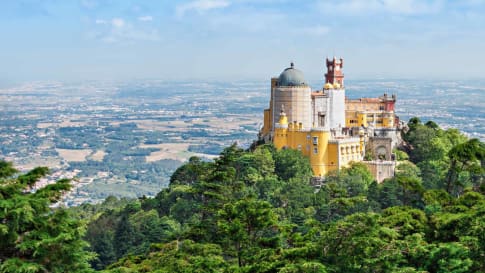
18 days
Aug, AprDiscover Portugal
Visiting Portugal
Join Odyssey Traveller small group journeys with like minded people on this immersive 18-day escorted tour of Portugal. This travel experience takes us from the capital of Lisbon, through Portugal's many historic cities and key UNESCO World heritage sites.
From A$11,275 AUD
View Tour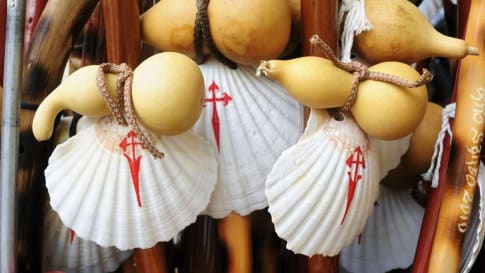
19 days
Sep, Jun, AugSaint James Way Small Group Walking Tour (The Camino)- Spain
Visiting Portugal, Spain
Experience pleasant sections of the Way of Saint James, crossing some of Spain’s most beautiful landscapes. We follow the pilgrims on easy distances of The Way to the mythical destination, Santiago de Compostella. Not since the middle ages has this adventure for body and mind been more popular. We also get to discover the artistic highlights and rich history of Northern Spain and Portugal, as well as enjoying local wines and exquisite food.
From A$14,135 AUD
View Tour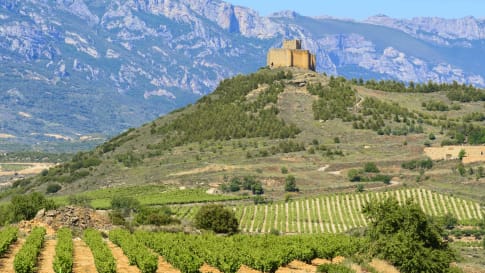
24 days
Apr, Oct, MarSmall Group Guided Tours of Spain and Portugal
Visiting Portugal, Spain
Our program explores the lands of Spain and Portugal, two countries bound by many centuries of history reflected in their modern cultures. Divided by history and language, contiguous neighbours Spain and Portugal were once host to gigantic empires that still bear their languages and lifestyles. A small group tour for couple and solo travellers.
From A$16,225 AUD
View Tour
